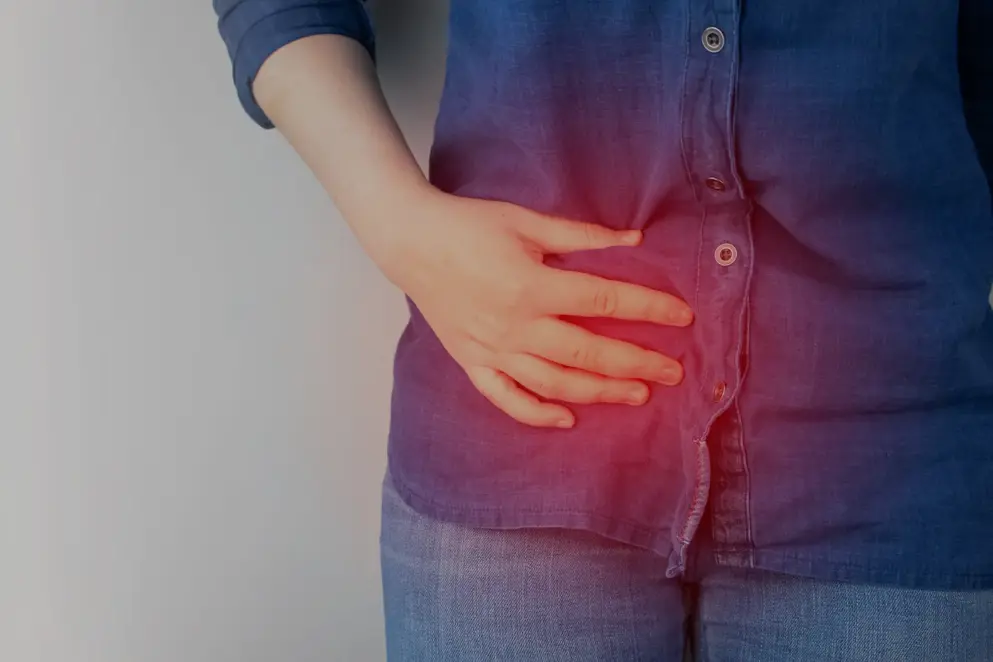
Understanding Crohn’s disease
Get to grips with Crohn’s disease, an increasingly common and debilitating form of IBD.
- Discover how early intervention could slow or even prevent disease progression
- Identify common symptoms experienced by patients with this condition
- Check out the global incidence with our insightful world map
In this section
Epidemiology
Prevalence and incidence
Crohn’s disease is an inflammatory bowel disease (IBD), characterised by chronic inflammation which can occur at any point along the gastrointestinal tract1. A growing body of evidence suggests that the prevalence and incidence of this debilitating condition is increasing globally, with some regional variation2–5.
While prevalence describes actual numbers of cases, incidence measures rates of new cases, and most epidemiological studies suggest that the incidence of IBD is increasing6.
Until recently, IBD was widely regarded as a disease of the western world4. The prevalence of IBD in westernised countries increased considerably over the course of the 20th century and today exceeds 0.3% in many regions of Europe, North America, and Oceania4. Interestingly, although this figure now appears to be stabilising or even decreasing in some of these countries, the beginning of the 21st century has seen a similar increase in the number of cases reported in newly industrialised nations, with incidence of IBD on the rise in South America, eastern Europe, Asia, and Africa (Figure 1)4. In Brazil, for example, an annual percentage increase in incidence of Crohn’s disease of 11.1% (95% confidence interval 4.8–17.8) has been reported 4.
Figure 1. Worldwide incidence of Crohn’s disease per 100,000 person years, 1990–2016 (Adapted4).
Nevertheless, the results of a large systematic review suggest that the prevalence of Crohn’s disease remains highest in Europe (322 cases per 100,000 individuals in Germany) and North America (319 cases per 100,000 individuals in Canada)4,7. More recently, similar findings were reported by a study based on data from the Global Burden of Diseases, Injuries, and Risk Factors Study (GBD)2. This revealed that between 1990 and 2017 the highest age-standardised prevalence rate of IBD was recorded in high-income North America (344.8 cases per 100,000 individuals [95% UI 331.7 – 359.3] in 1990; 422.0 cases per 100,000 individuals [95% UI 398.7 – 466.1] in 2017)2. Meanwhile, the lowest age-standardised prevalence rates were reported in the Caribbean (6.7 cases per 100,000 individuals [95% UI 6.3 – 7.2] in 2017)2. Other regions with low rates of IBD included Andean Latin America and parts of sub-Saharan Africa2.
Disease development
Among adults, Crohn’s disease affects more women than men8,9. It can develop at any point from early childhood but the median age of onset is 30 years6,10. Onset tends to occur in two peaks – mainly between 20 and 30 years of age, but also around 50 years10.
Aetiology
Genetic susceptibility
Though the exact aetiology of Crohn’s disease remains unknown, familial aggregation studies and twin studies indicate a strong genetic component11,12. A family history of the condition has been reported by approximately 12% of patients and concordance rates among monozygotic twins are estimated to be around 50%1,3.
Further evidence of a genetic component can be found in differences in the prevalence of Crohn’s disease between ethnic groups. Caucasians and African Americans are among those most commonly affected, while individuals of Hispanic and Asian descent are considered to be at lower risk11. Of note, risk of developing Crohn’s disease is reportedly 3–fold higher in Jewish compared with non-Jewish individuals12.
To date, genome-wide association studies have identified over 200 susceptibility loci for IBD13. In Crohn’s disease, these include polymorphisms in the NOD2 gene, which is expressed in a range of cell types and encodes a protein with a role in innate immunity, as well as in autophagy-related genes14–16.
Gut flora
Dysbiosis is thought to play a key role in IBD pathogenesis, and Crohn’s disease is associated with the presence of specific pathogens in the gut microbiota and a reduction in gut microbial diversity compared to healthy individuals17. Alterations in the composition of the intestinal microbiota in patients with Crohn’s disease include changes in the relative abundance of Bacteroides and Firmicutes, and an increased proportion of Gammaproteobacteria and Enterobacteriales, as well as a decrease in Clostridiales17.
Environmental factors
A range of environmental factors influence the onset and progression of Crohn’s disease in genetically susceptible individuals1.
Cigarette smoking is the best-studied environmental risk factor. Among smokers, risk of developing Crohn’s disease is reportedly double that of non-smokers and smoking has been linked to an earlier onset of disease, need for immunosuppression, increased need for surgical intervention and higher rates of postoperative recurrence1,3.
Dietary changes and associated gut dysbiosis has also been implicated in the development of Crohn’s disease1. While high fibre diets are thought to reduce risk of Crohn’s disease, diets rich in sugar, fat, and meat have been shown to increase risk in several studies10.
Crohn’s disease risk is also held to be increased by exposure to certain drugs, including oral contraceptives, aspirin and non-steroidal anti-inflammatory drugs (NSAIDs), as well as use of antibiotics such as penicillins, cephalosporins, metronidazole and fluoroquinolones, particularly during childhood1,10,18.
of interest
are looking at
saved
next event
Developed by EPG Health for Medthority in collaboration with Takeda, with some content provided by Takeda.
C-ANPROM/INT/IBDD/0041 October 2021.

